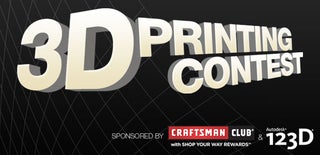Introduction: Realistic Chocolate Heads From 3D Prints
This instructable describes the workflow used to create chocolate faces. The workflow uses 3D scanning, data manipulation, 3D printing, vacuum forming and chocolate. If your interested in using this workflow or would like some more information send use an email.
Step 1: 3D Scanning
The 3D scanning was done using a Mephisto scanning system. The systems very accurate. All the data was aligned and re-meshed in meshlab.
Step 2: Editing in Autodesk Mudbox
Autodesk's Mudbox was used to remodel some areas of the scan data and remove any major overhangs that will make it difficult to remove the 3D print from the mold. You can also manipulate the data to make the scans more interesting.
Step 3: Editing Meshlab
Before 3D printing the back of the heads were removed and the hole closed to leave a flat surface.
Step 4: 3D Printing
The heads were printed on a 3D systems zprinter. The prints were painted with epoxy resin to harden them and sprayed with a food safe lacquer.
Step 5: Vacuum Forming
The prints were then vacuum formed to create molds.
Step 6: Chocolate
The chocolate was melting in a bowl over boiling water. The melted chocolate was then transferred to a cold bowl and stirred to temper. Its important to temper the chocolate so that it shrinks and is easier to remove from the mold. After pouring check for air bubbles.
Step 7: Finished Chocolates
The project was quite a laugh, we thought the chocolate did look a lot like the people we scanned despite losing a little detail during each stage of the process.

Second Prize in the
3D Printing Contest







